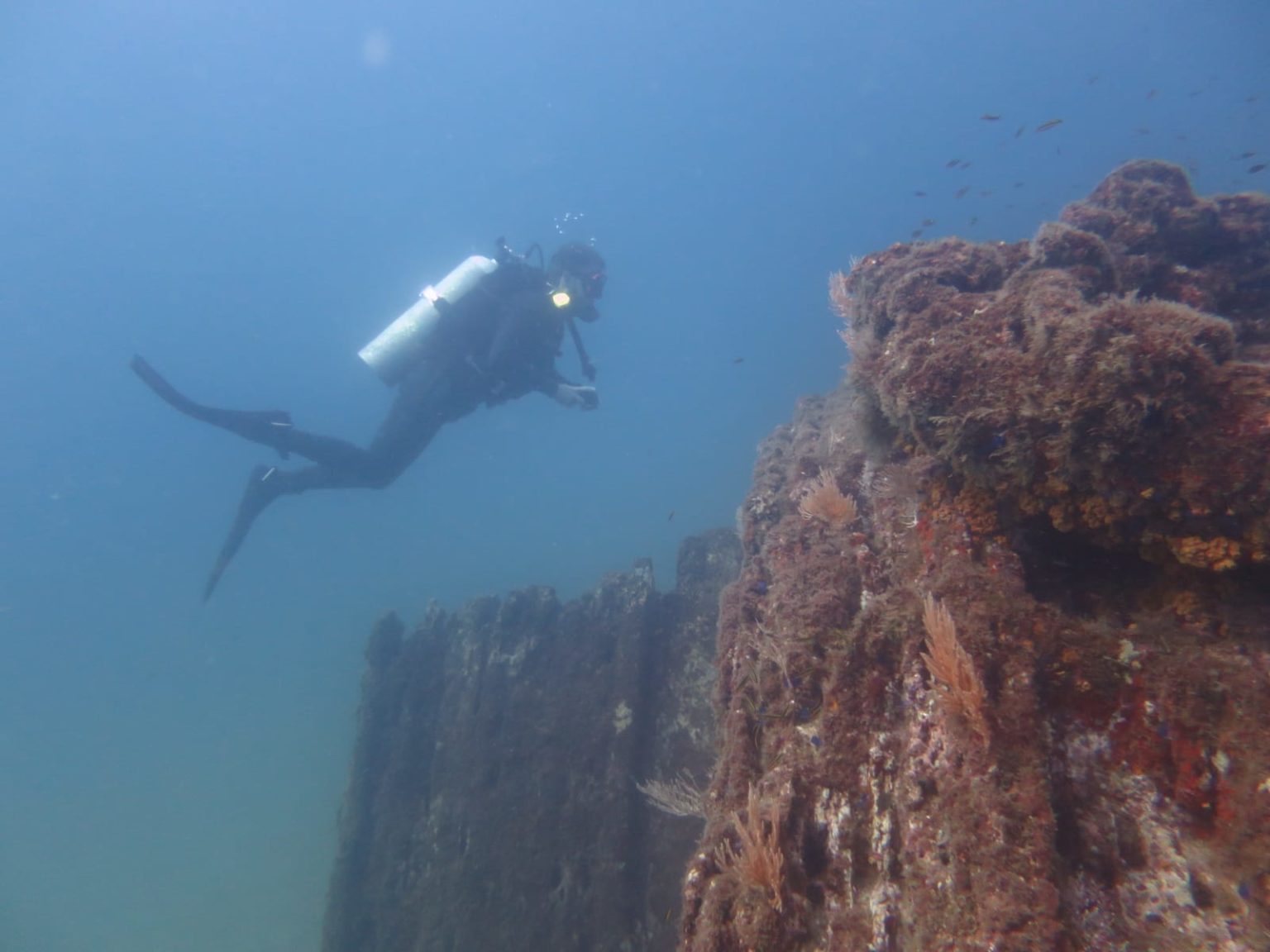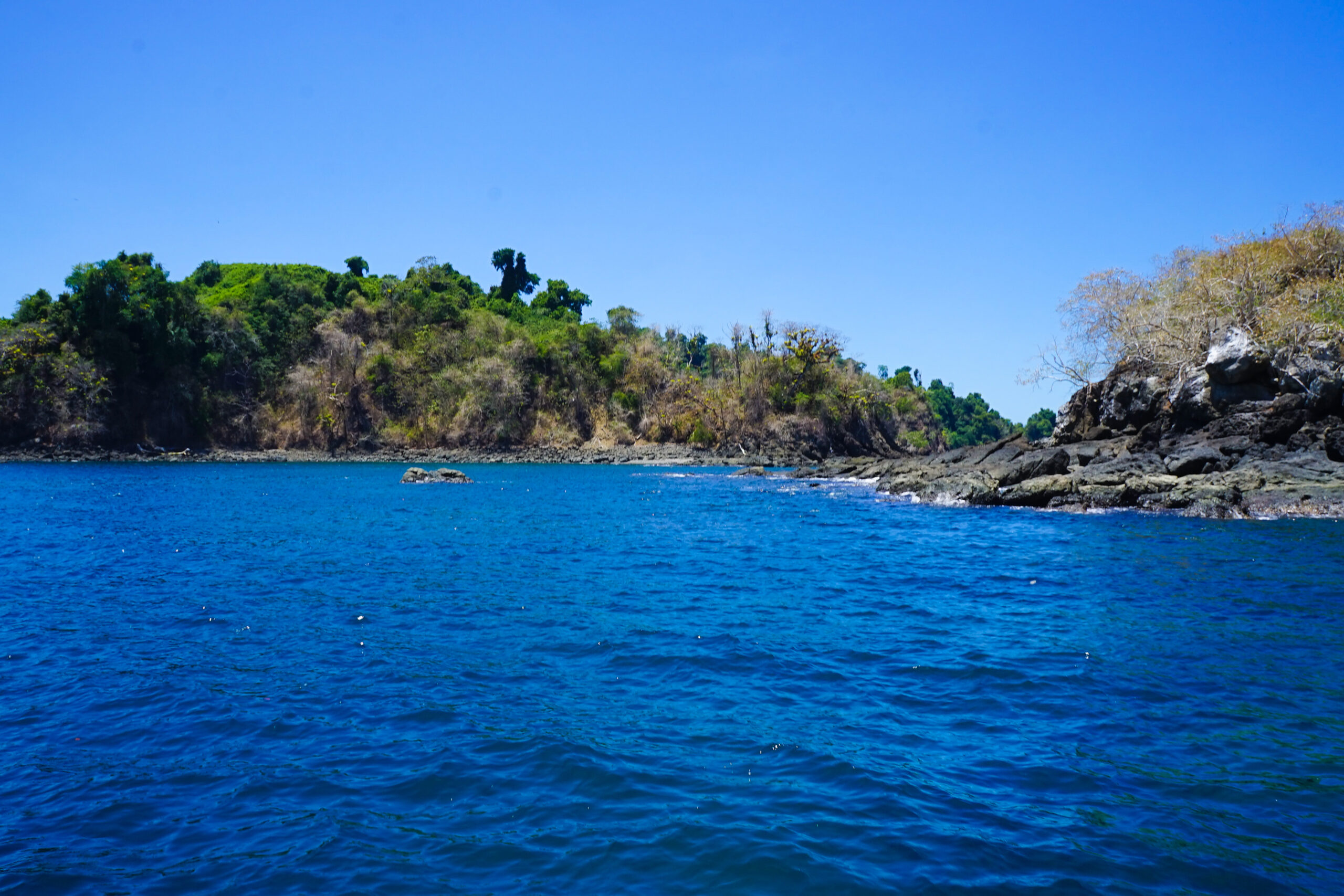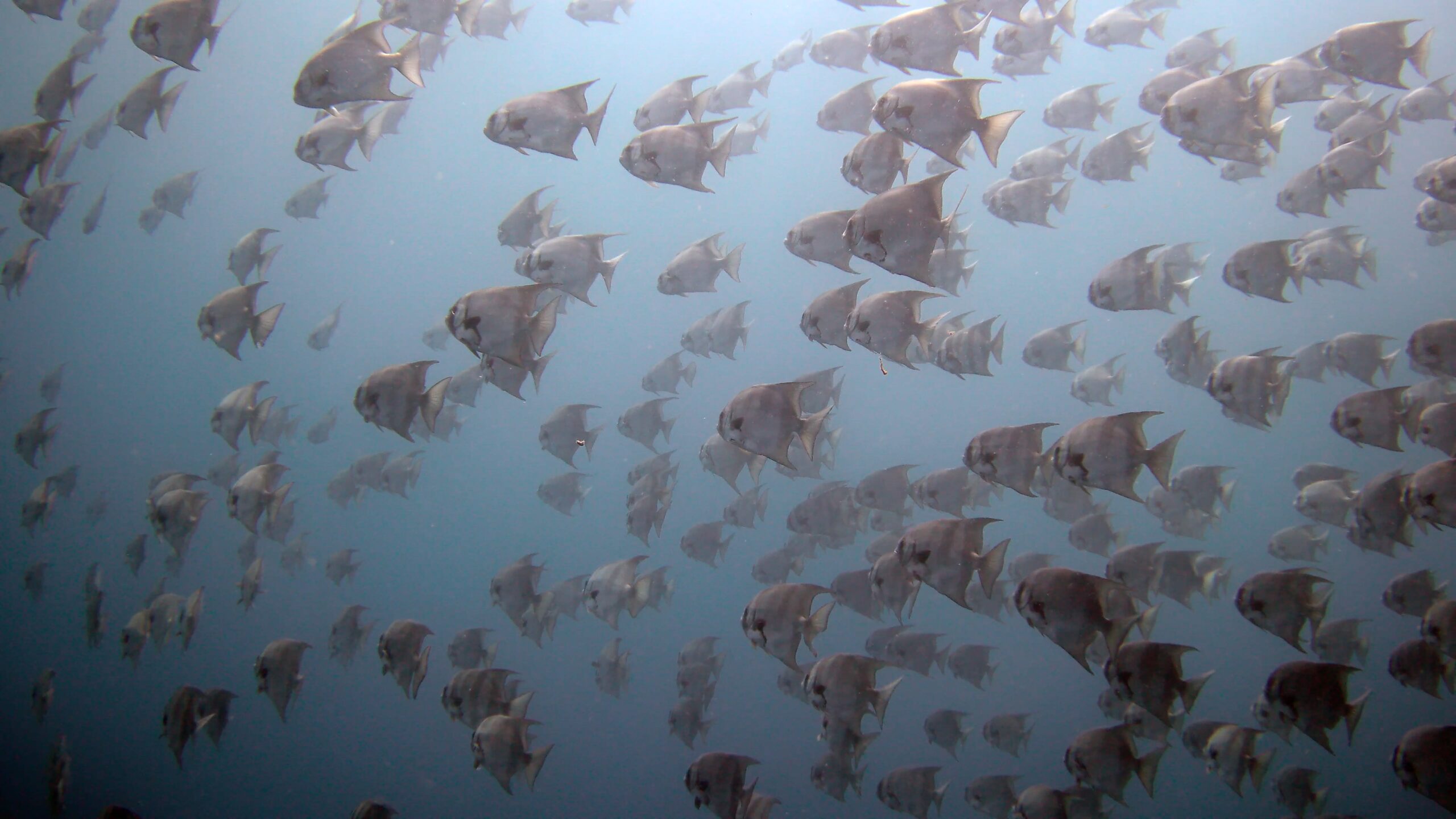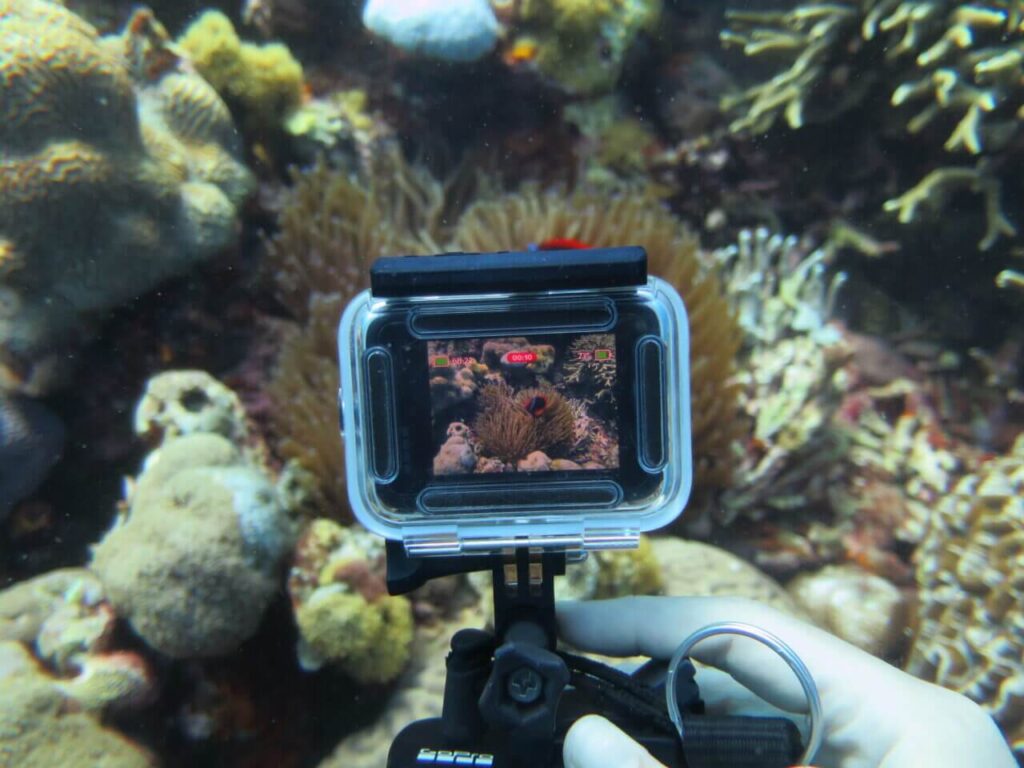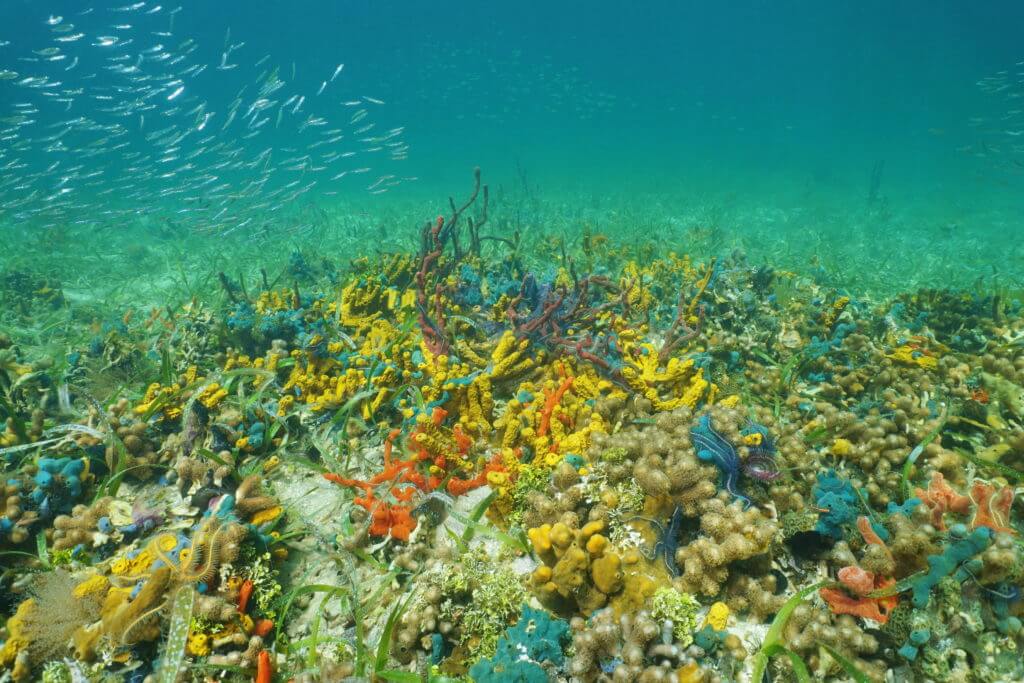
Panama: with epic Pacific swells featuring tons of big marine animal action on one side and chilled Caribbean vibes for easy diving amidst beautiful coral reefs on the other; Panama is an often-overlooked but seriously awesome getaway for scuba divers.
Despite the smallness of this transcontinental country; which is located in both Central and South America, it has an impressive tally of dive destinations.
There’s something for everyone; whether you’re a total beginner wanting to get scuba certified or a seasoned dive veteran looking to experience real adventure, Panama has it all.
Witness hammerhead sharks, humpback whales, manta rays, turtles and white tip reef sharks on the remote Pacific side and superb coral reefs on the more touristy Caribbean side. Here’s what this report covers:
- Best Locations to Dive in Panama (with map).
- Best Diving in Panama (in-depth look at each location).
- Dive Seasons (best time to visit each area).
Best Places to Dive in Panama
#1 Coiba
- Located on the Pacific side of Panama.
- Huge schools of fish, countless stingrays, plenty of turtles and white tip reef sharks.
- Schooling hammerhead sharks at certain time of year.
- Whale sharks and manta rays during some months.
- Suitable for pre-certified divers.
- Generally viewed as the best place to dive in Panama.
#2 Bocas del Toro
- On the Caribbean side of Panama.
- Rich coral reef ecosystem.
- Suitable for beginners and learning to dive.
- Cheap to dive.
- Easy to reach with a huge backpacker scene.
- May be a little unexciting for experienced divers.
#3 Pearl Islands
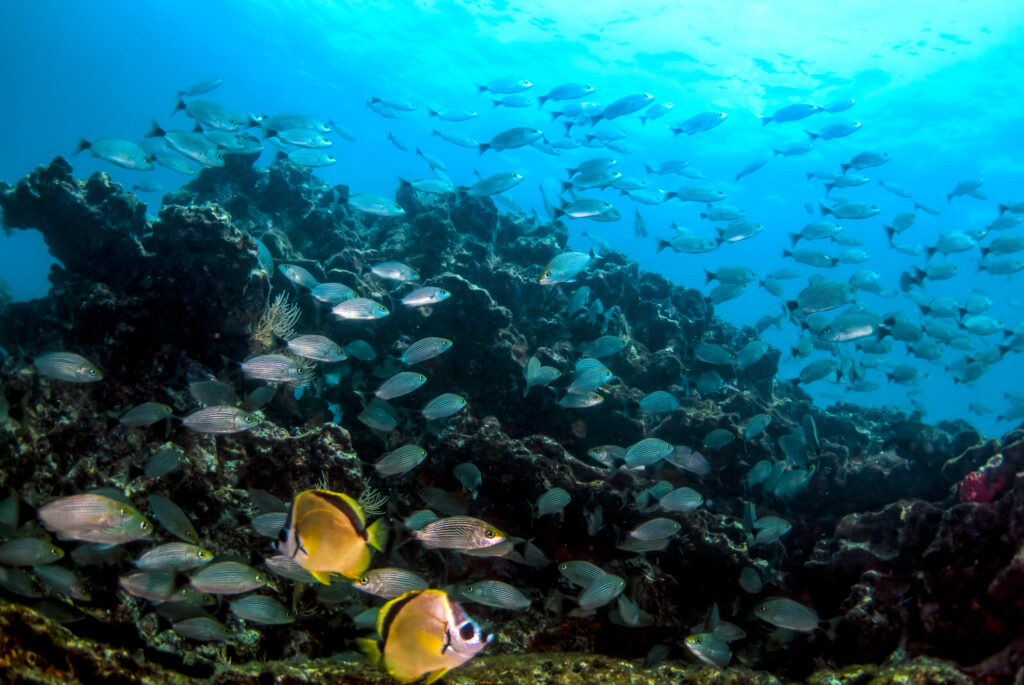
- Located on the Pacific side.
- Massive schools of fish.
- Many humpback whales sighted from boat.
- Lucky people may see humpbacks during dives.
- Strong currents and deep dives.
#4 Portobelo National Park
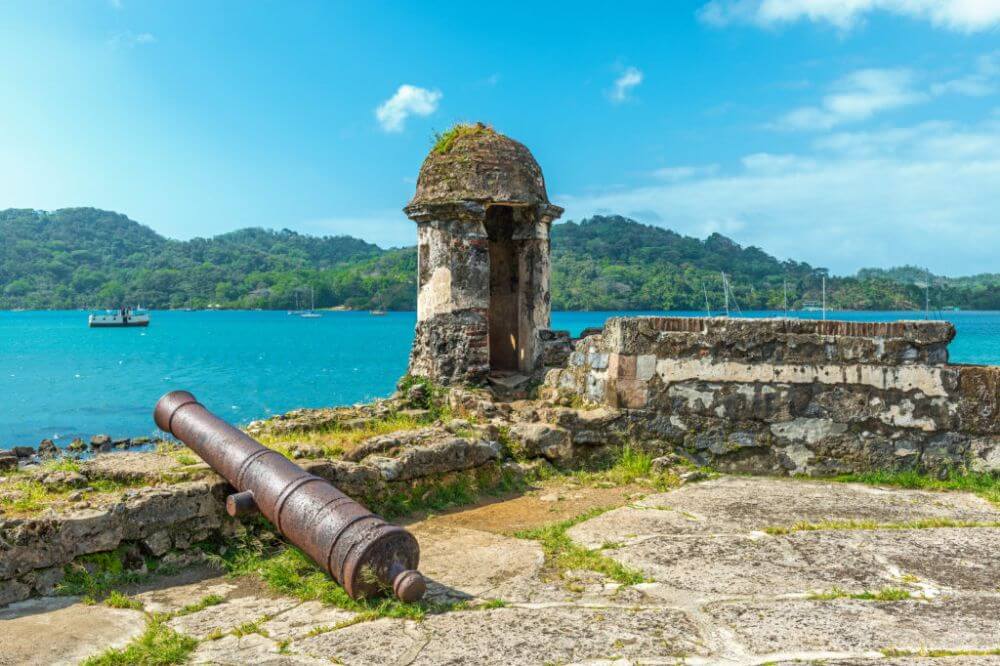
- On the Caribbean side.
- Variety of reefs and underwater canyons to explore.
- Quick to reach from Panama city.
- Shallow, warm waters suitable for beginner divers.
Best Diving in Panama: In-Depth Look:
#1 Coiba
Coiba Marine Park consists of 39 islands located off of Panama’s Pacific coast within the Gulf of Chiriqui.
At all times of the year, the waters around Coiba are absolutely teaming with white tip reef sharks, southern stingrays, turtles and huge schools of fish.
During January whale sharks appear and then in March you can see manta rays. Perhaps the best time to go is between April and May – when groups of great hammerhead sharks are frequently sighted.
I saw hammerheads on three dives during my 3 day diving trip at Coiba in April, although sadly the water visibility was too cloudy for the videos I took to be much good (look out for the brief shot of one at 0:51 in the video below!).
It’s because of it’s richness of big marine life and countless dive sites that Coiba Marine Park is viewed as the best place to dive in all of Panama.
In fact, Coiba is considered by many (myself included) to be the best Pacific-side-dive-destination across the entire region of Central America.
You just won’t see as many white tip reef sharks, southern stingrays, turtles or huge schools of fish anywhere else – and during certain months it’s a great place to see bigger animals: especially hammerheads!
There’s also some very decent coral reef scattered around the many dive sites and even some suspiciously manmade rocks that are allegedly the remains of an ancient pre-columbian city.
Read main guide to Coiba Diving here
#2 Bocas del Toro
A small group of islands located within the Carribean; Bocas del Toro is perhaps the most famous scuba diving destination within Panama.
The diving here is extremely easy; being in warm, shallow waters that are devoid of any current. Exquisite coral reef is the main attraction and it’s absolutely everywhere!
You will see a spectacular variety of extremely healthy hard and soft corals around Bocas del Toro, where the waters are filled with small and juvenile reef fish.
Various critters including dart crabs, nudibranch, seahorses and squid are regularly seen and young turtles and stingrays also sometimes make an appearance.
There’s three small shipwrecks; one of which is large enough to actually venture inside and explore a little.
More experienced divers may quickly tire of the diving which is fairly repetitive and devoid of larger marine animals; however if you’re a coral-nerd like me you’ll love it!
Bocas del Toro is also one of the cheapest places to dive in Central America; indeed the cost of two dives there is only $70 whereas at most other destinations like Coiba it’s $140.
The easy diving conditions and low prices makes Bocas del Toro the best place in Panama to learn to scuba dive.
On the islands there is a lot of tourist activity; swathes of backpackers lurch down every street; partying long into the night; this far from the most tranquil setting!
Check out my main guide on diving Bocas del Toro here!
#3 Pearl Islands
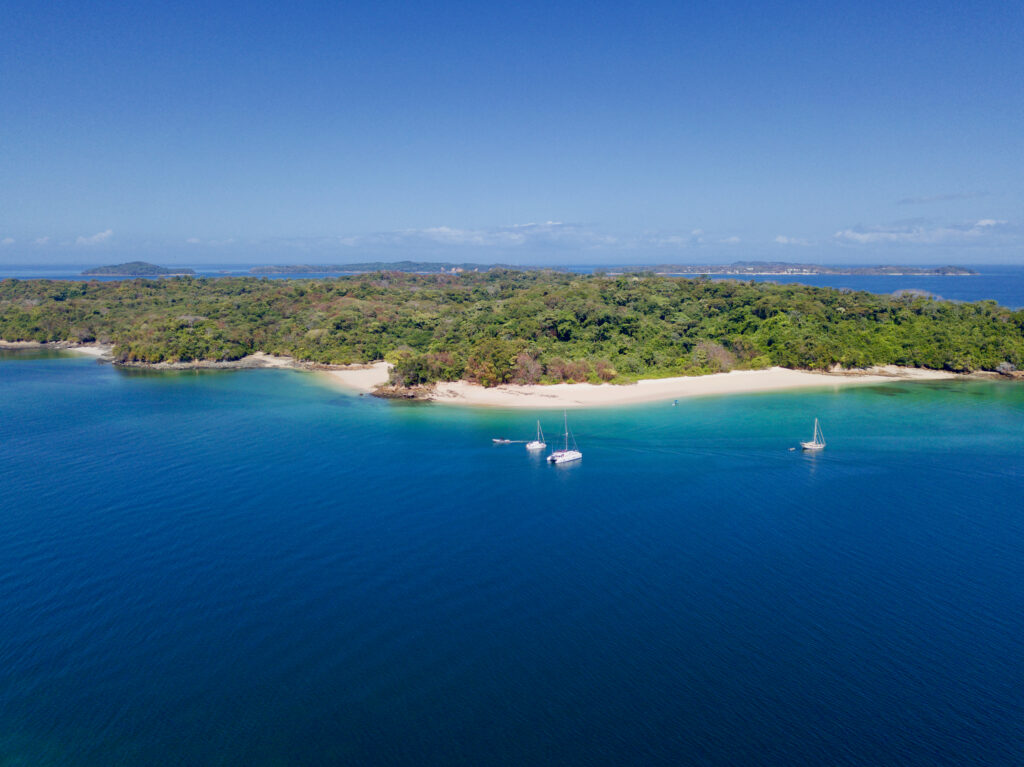
The Pearl Islands are located about 40 miles off the Pacific side of Panama and although they’re not as impressive to dive as Coiba Marine Park; they’re easier to reach, being closer to Panama City.
Wild and untamed, this group of over 200 islands are mostly uninhabited. Contador Island is one of the few settled islands; taking 2.5 hours to reach from Panama City via boat.
Along the way you are likely to see bait balls, dolphins and humpback whales.
Strong tidal shifts, big currents that can quickly change and considerable depths mean this is definitely a destination for experienced divers and not somewhere to learn to dive!
Between June – October an estimated 2000 – 2500 southern humpback whales visit the Pearl Islands, many of which are mothers who come to give birth.
Your chances of seeing humpback whales from the boat during these months are insanely high. If visibility is good, you also stand a very good chance of seeing them during dives. And you’re practically guaranteed to hear them singing underwater.
Find out more about diving the Pearl Islands here.
#4 Portobelo National Park
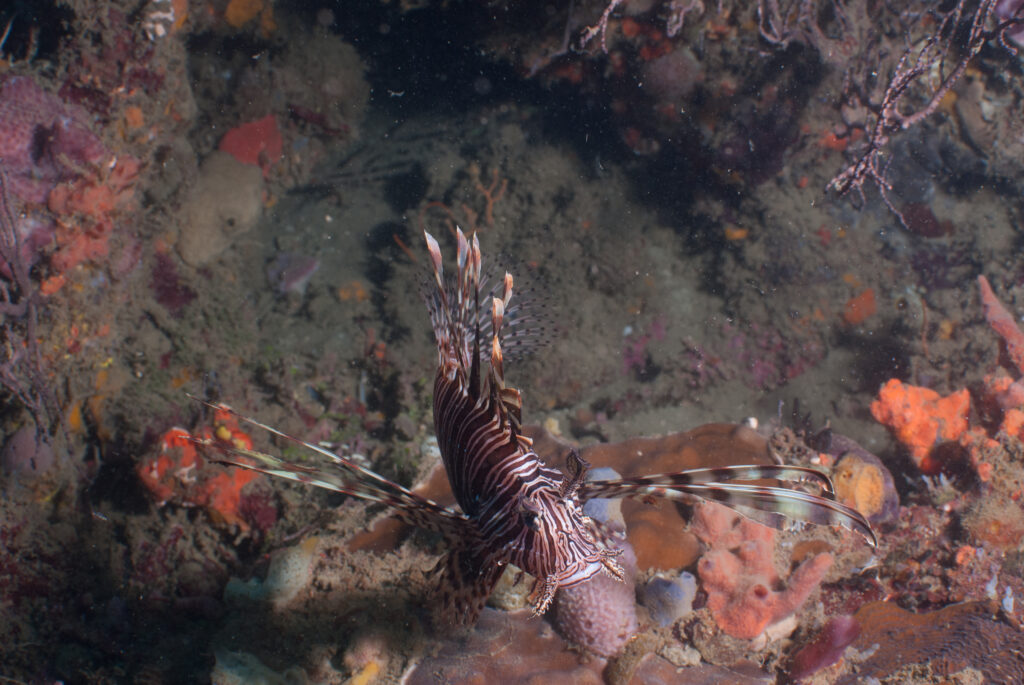
Reached from Panama City in just 90 minutes via the transisthmic highway, Portobelo has a rich history; being the port of exit and entry for all of South America at the time of the Spanish colonies.
In addition to numerous historical buildings including a sea fort and a World Cultural Heritage status assigned by UNESCO, this Caribbean port city has a number of famous festivals.
Portobelo National Park extends across both coastal forest and coral reef communities. It is these coral reefs that scuba diver’s come to explore.
Indeed, the extensive coral reef systems found here are extremely healthy and vibrant; being home to an immense variety of reef fish.
In addition to reefs; divers are also likely to see a lot of turtles, as the adjacent beaches are nesting grounds for four species of turtles including the endangered Hawksbill turtle.
The calm, warm waters here are suitable for beginners or those wishing to learn to scuba dive.
Read more about Portobelo National Park diving here.
When to Dive Panama:
It’s possible to dive Panama all year round; however due to differing activity of marine species as well as the fact that some of Panama’s top diving destinations are on the country’s Pacific side whereas others are on it’s Caribbean side, certain times of the year present different dive conditions in key regions:
PACIFIC SIDE (Coiba and the Pearl Islands):
Dry Season: December – May.
Rainy Season: June – November.
- January: Best time to see whale sharks.
- March: Best chance to see manta rays.
- April – May: best time to see hammerhead sharks (Usually at Coiba only).
- June: Start of rainy season.
- July – October: Humpback whale season.
- September: Rainy season is now fully set in. Less travellers. Cheaper deals.
- December: Start of dry season.
Something really important to stress is that weather conditions on the Pacific side are much harder to predict. Use the above information as a rough guide only – dry and rainy season can start and finish weeks early or late. And during either you can have bad or good visibility – it can literally vary by the day. Generally speaking though, the migratory behaviour of marine animals is a little more reliable.
CARIBBEAN SIDE (Bocas del Toro and Portobelo):
- Dry Season: February – May and September – November. Best visibility during these months.
- Wet Season: June – August and December – January. Visibility less ideal.
As you can see there’s two dry seasons and two rainy seasons on the Caribbean side of Panama. Do note, that these seasons are more predictable and that even during wet season water’s are usually calm with good visibility.
My Experience Diving in Panama / Debriefing
From 2021 – 2022 I spent an entire year driving a beat-up car I’d bought and scuba diving around Costa Rica and it’s neighbouring countries Nicaragua and…Panama!
Whilst in Panama, I decided to explore the country’s two most exciting sounding (and also hardest to reach!) dive destinations: Coiba Marine Park and Bocas del Toro.
The two places could not have been more different to eachother but blew me away; each in a totally different way.
I was especially mesmerised by the scuba diving around Coiba; for which I embarked on a special overnight trip to explore the area’s most remote dive sites around it’s northern region. It was there that I witnessed hammerhead sharks, dozens of southern stingrays together and the biggest schools of pelagic fish I’d ever seen.
Bocas del Toro revealed to me the best coral reef I’ve so far seen in all of Central America and it was utterly beautiful – although not as exciting as Coiba!
I loved scuba diving Panama and plan; it was one of the most challenging yet also the most exciting parts of my year long odyssey driving and diving around Central America. You can read about the whole adventure here.
